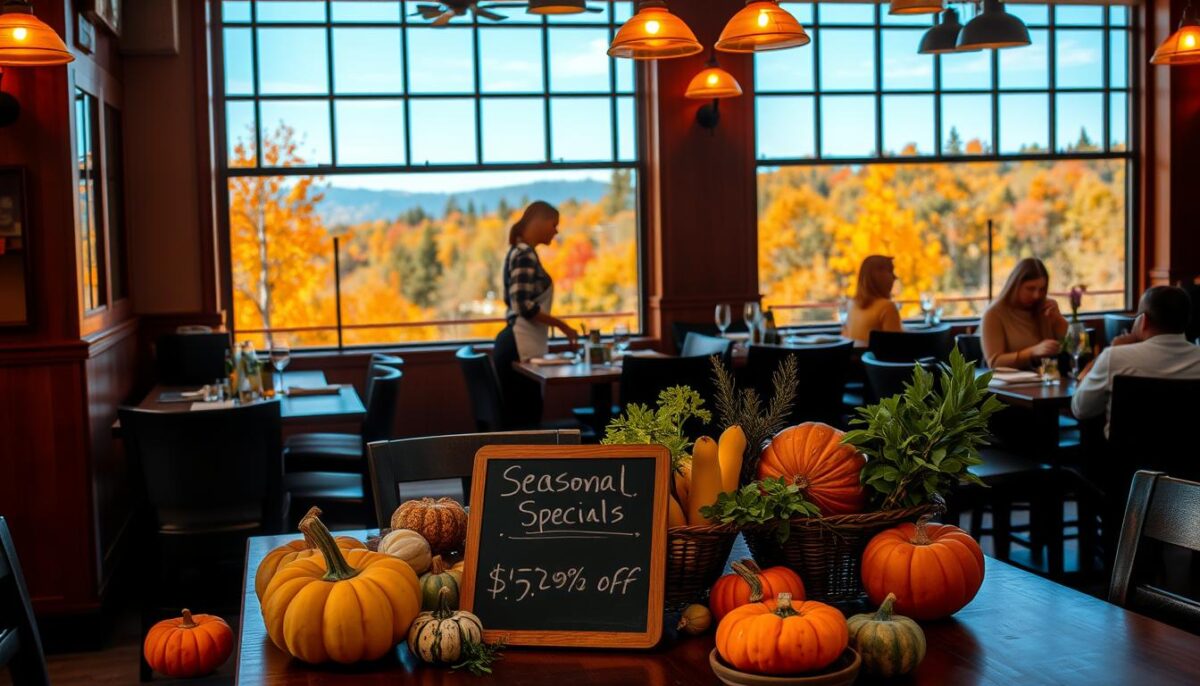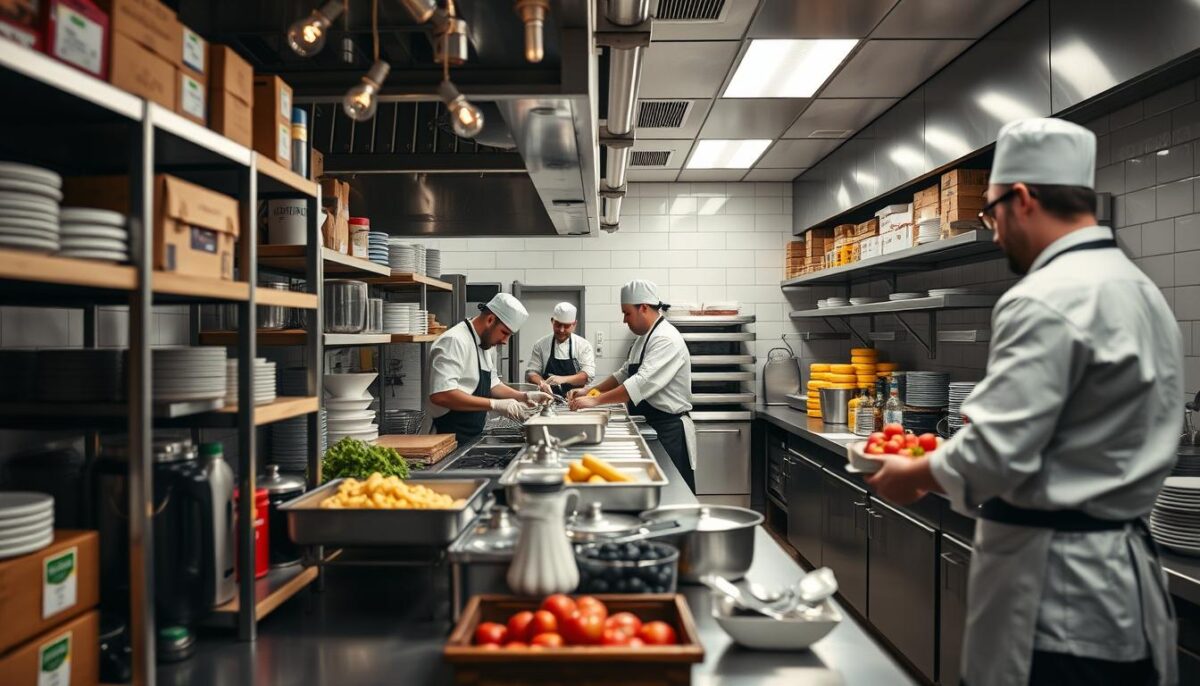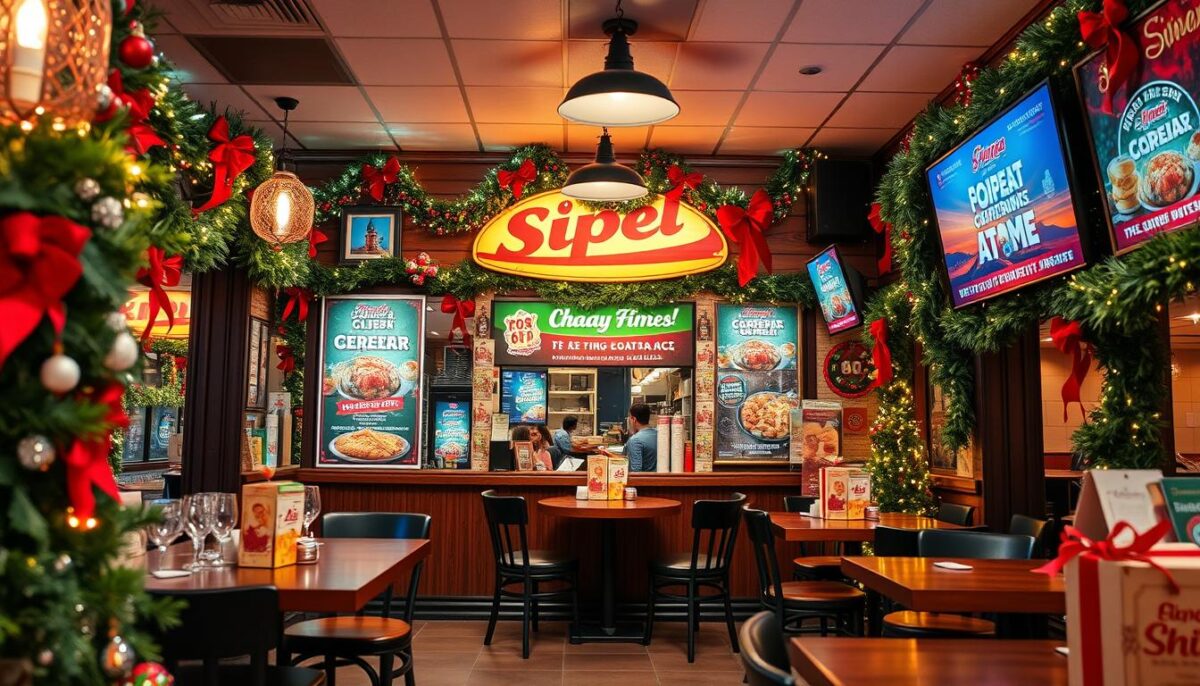Why Tracking NY Terminal Market Prices Daily Boosts Profit
August 20, 2025
6 Hidden Factors to Compare Wholesale Food Distributors
August 21, 2025As a restaurant owner, I’ve seen firsthand how the right strategies can transform a business. One approach that’s made a significant impact on my bottom line is leveraging seasonal fluctuations to reduce costs. Did you know that by sourcing ingredients in season, restaurants can cut costs by up to 20% annually? This simple yet effective strategy not only enhances menu quality but also boosts customer satisfaction.
By understanding the seasonal availability of ingredients and adjusting our menus accordingly, we can capitalize on fresher produce at lower prices. For instance, sourcing fresh fruits in season can significantly reduce costs while ensuring optimal taste. This approach has been a game-changer for my business, and I’m excited to share these strategies with you.
Key Takeaways
- Understand how seasonal fluctuations impact food costs and customer behavior.
- Learn how to adjust menus to capitalize on seasonal ingredients.
- Discover strategies for building strong relationships with reliable suppliers.
- Find out how to reduce waste and costs through proper storage techniques.
- Explore ways to keep menu offerings fresh and exciting for customers.
Understanding the Impact of Seasonality on Restaurant Costs
As a restaurant owner, understanding how seasonality affects your business is crucial for maintaining profitability. Seasonal pricing is a strategy that involves adjusting your prices according to demand during specific times of the year. This approach allows you to make your restaurant more attractive to a larger pool of customers during certain periods.
Seasonal changes can significantly impact your restaurant’s bottom line. By understanding these fluctuations, you can develop a seasonal strategy that maximizes revenue during peak periods and maintains customer flow during slower times.
How Seasonal Changes Affect Your Restaurant’s Bottom Line
Seasonal fluctuations directly influence your restaurant’s revenue. For instance, during holiday seasons, you can capitalize on increased demand by offering special menus or promotions, thus boosting your revenue. Conversely, during off-peak seasons, you may need to adjust your marketing strategy to attract more customers.
| Season | Customer Behavior | Restaurant Strategy |
|---|---|---|
| Summer | Tourists and outdoor events | Outdoor seating, seasonal menus |
| Winter | Holiday celebrations, cozy atmosphere | Special holiday menus, promotions |
| Spring/Fall | Local events, festivals | Partner with local event organizers, offer festival-themed menus |
The Financial Opportunities in Seasonal Fluctuations
Understanding seasonal customer behavior patterns allows you to adjust your marketing efforts and operational focus to capture more value throughout the year. For example, you can create exciting new offerings that customers are willing to pay premium prices for during peak seasons. Additionally, implementing “counter-seasonal” strategies can help create unique market positioning and cost advantages.
By leveraging seasonal ingredients and menu engineering, you can reduce food costs while attracting customers with new and exciting dishes. This approach not only enhances your offer but also contributes to a more sustainable business model.
My Journey to Discovering Seasonal Buying Restaurant Savings
The moment I realized the potential of seasonal buying to revolutionize my restaurant’s costs was a turning point in my business. As I reflect on my journey, I understand that it wasn’t just about cutting costs; it was about transforming my entire approach to managing my restaurant.
The Financial Challenges I Faced as a Restaurant Owner
Running a restaurant is a complex business, and managing costs was a constant challenge. I struggled with maintaining profitability, especially when it came to menu pricing and inventory management. The fluctuations in seasonal produce prices were a significant concern, as they directly impacted my menu costs and, ultimately, my customers.
I recall the days when I’d anxiously watch the market prices, trying to predict when they would rise or fall. It was a guessing game that often left me with either overstocked inventory or, worse, running out of key ingredients. This not only affected my revenue but also strained my relationships with customers who were disappointed by menu inconsistencies.
How I Transformed Seasonal Challenges into Profit Opportunities
As I navigated these challenges, I began to see the potential in seasonal buying. I started by developing a systematic approach to tracking seasonal price fluctuations, which became the foundation of my purchasing strategy. I also built strong relationships with local suppliers, gaining insights into upcoming seasonal changes before they affected market prices.
By involving my kitchen team in menu development based on ingredient availability, I turned them into partners in the seasonal buying strategy. This not only improved our menu offerings but also increased customer satisfaction. I learned to market these seasonal changes as a premium feature of my restaurant, rather than apologizing for menu inconsistencies.
To capitalize on seasonal opportunities, I developed a year-round calendar that anticipated these changes and prepared my business to capitalize on them. This strategic planning allowed me to turn potential challenges into profit centers, ultimately strengthening my restaurant’s identity and creating a more loyal customer base.
| Season | Key Ingredients | Menu Changes |
|---|---|---|
| Spring | Fresh produce, herbs | Salads, light dishes |
| Summer | Grilled vegetables, fruits | BBQ, refreshing desserts |
| Autumn | Root vegetables, squash | Hearty stews, warm comfort food |
| Winter | Citrus, preserved goods | Bright, citrusy dishes, rich desserts |

By embracing seasonality, I was able to create a more dynamic menu that not only reduced costs but also attracted more customers. The key was being proactive and adaptable, using seasonal changes to drive both my menu and marketing strategies.
Strategy #1: Leverage Seasonal Ingredients for Menu Cost Reduction
Leveraging seasonal ingredients is a crucial strategy for reducing menu costs in restaurants. By understanding the availability and pricing of seasonal produce, restaurants can create menus that are both cost-effective and appealing to customers.
Identifying the Most Cost-Effective Seasonal Produce
To effectively leverage seasonal ingredients, it’s essential to identify the most cost-effective produce available during different seasons. This involves researching local farmers’ markets, suppliers, and seasonal price trends. For example, during summer, ingredients like tomatoes and zucchini are abundant and affordable, making them ideal for inclusion in summer menus.
By focusing on seasonal produce, restaurants can reduce their reliance on expensive, imported ingredients. This not only cuts costs but also allows for the creation of fresher, more nutritious dishes that attract both new and loyal customers.
Creating a Flexible Menu Structure That Adapts to Seasonal Availability
Designing a menu that can adapt to seasonal changes is crucial for maximizing cost savings. One effective approach is the “80/20 menu design,” where 80% of the menu remains consistent, and 20% changes seasonally. This balance allows restaurants to maintain customer familiarity while introducing new, seasonal offerings.
To implement this strategy, I created “ingredient zones” on my menu, allowing for natural substitutions without requiring complete dish redesigns. I also developed standardized recipe templates that enable seasonal ingredient swaps while maintaining consistent flavor profiles. This flexibility ensures that menu items remain fresh and exciting, even as seasonal availability changes.
By leveraging seasonal ingredients and creating a flexible menu structure, restaurants can significantly reduce menu costs while enhancing customer satisfaction. This approach not only supports local suppliers but also provides an opportunity to promote seasonal menus as a unique selling point, attracting customers looking for fresh, locally sourced food.
Strategy #2: Implement Dynamic Pricing Based on Seasonal Demand
Dynamic pricing is a powerful tool that allows restaurants to adjust their prices according to seasonal fluctuations in demand. By implementing this strategy, I was able to maximize my restaurant’s revenue throughout the year.
How I Analyze Seasonal Customer Patterns
To effectively implement dynamic pricing, it’s crucial to understand your customers’ seasonal patterns. I analyzed my restaurant’s customer data to identify peak and off-peak seasons. This involved reviewing sales data, customer feedback, and market trends to determine how demand varied throughout the year.
By understanding these patterns, I could anticipate and prepare for fluctuations in demand, adjusting my pricing strategy accordingly.
Setting Price Points That Maximize Profit During Different Seasons
After identifying my key seasons, I defined ideal price rates for each period. To do this effectively, I established a base and ceiling price range. During low-demand times, I used bundling and fixed-price offerings to attract new customers.
To determine fair prices, I considered the cost of ingredients, labor, and other expenses. I also used data analysis to calculate optimal price adjustments for different menu categories based on seasonal ingredient costs and customer willingness to pay.
| Season | Price Adjustment Strategy | Customer Response |
|---|---|---|
| Peak Season | Subtle price increases on high-demand items | Minimal customer resistance |
| Off-Peak Season | Special value offerings and discounts | Increased customer frequency |
| Shoulder Season | Limited-time seasonal specials at premium prices | Positive response, testing price elasticity |
By implementing dynamic pricing and analyzing customer patterns, I was able to maximize my restaurant’s revenue while maintaining customer satisfaction.
Strategy #3: Optimize Staffing Costs Through Seasonal Planning
Effective seasonal planning can significantly reduce labor costs in the restaurant business. As a restaurant owner, I’ve learned that aligning staffing levels with seasonal demand is crucial for maintaining profitability. Before diving into staffing strategies, it’s essential to assess your business needs during different seasons.

Forecasting Staffing Needs Based on Seasonal Trends
To optimize staffing costs, I start by analyzing historical data to identify seasonal trends in customer traffic. This involves reviewing sales records and customer counts from previous years to determine peak and off-peak periods. By understanding these patterns, I can forecast my staffing needs more accurately. For instance, if my restaurant experiences a surge in customers during summer weekends, I’ll ensure I have sufficient staff on hand to handle the increased demand.
It’s also crucial to consider factors like local events, holidays, and weather patterns that may impact customer traffic. By taking these variables into account, I can adjust my staffing levels accordingly to avoid overstaffing during slow periods.
Creative Scheduling Solutions That Saved My Restaurant Money
Implementing creative scheduling solutions has been instrumental in reducing labor costs at my restaurant. One effective strategy I’ve adopted is the “core and flex” staffing model. This involves maintaining a core team of full-time employees supplemented by flexible, part-time staff during peak seasons. I’ve also introduced a voluntary reduced-hours program during slow seasons, which helps retain valuable staff while reducing labor costs.
- Cross-training initiatives allow staff to fill multiple roles as seasonal needs shift.
- Offering seasonal sabbaticals or planned time off during predictably slow periods benefits both staff and my bottom line.
- Developing mutually beneficial relationships with complementary seasonal businesses to share staff.
By leveraging these strategies, I’ve been able to optimize my staffing costs while ensuring that my restaurant remains well-staffed to meet customer demand throughout the year.
Strategy #4: Strategic Inventory Management for Seasonal Fluctuations

As a restaurant owner, I’ve learned that managing inventory strategically is key to thriving during seasonal changes. Effective inventory management ensures that my restaurant doesn’t run out of supplies mid-service, maintaining customer satisfaction and reducing waste.
To achieve this, I began collecting data on my inventory levels at the same time and day each week. This consistency ensures that all data is accurate and reliable, allowing me to make informed decisions about my restaurant’s needs.
Preventing Waste During Seasonal Transitions
One of the biggest challenges in managing inventory is preventing waste during seasonal transitions. To address this, I implemented a system to track inventory levels closely and adjust my ordering accordingly. This involved creating seasonal purchasing templates that automatically adjust par levels based on historical data.
By doing so, I was able to minimize waste and optimize my menu offerings to match seasonal demand. This not only reduced costs but also helped maintain a fresh and appealing menu for my customers.
Technology Tools That Helped Me Track Seasonal Inventory Needs
I utilized several technology tools to streamline my inventory management process. One of the most effective solutions was implementing WISK’s inventory management system, which offers menu costing and ingredient-level tracking. This tool allowed me to accurately predict inventory needs and optimize food and drink prices.
I also integrated my POS system with inventory tracking to get real-time insights into how seasonal menu items were performing and affecting stock levels. Additionally, I used predictive analytics tools to forecast ingredient needs based on seasonal patterns, weather forecasts, and upcoming local events.
By leveraging these technologies, I was able to make my business more efficient and responsive to seasonal fluctuations, ultimately improving my bottom line.
Strategy #5: Develop Seasonal Marketing Campaigns That Drive Traffic

As a restaurant owner, I’ve learned that seasonal marketing campaigns are vital for increasing customer engagement. By leveraging seasonal themes, holidays, and trends, I can create targeted promotions that attract more customers to my restaurant.
Cost-Effective Promotional Strategies for Each Season
To maximize my marketing efforts, I develop cost-effective promotional strategies tailored to each season. For instance, during summer, I focus on refreshing my menu with seasonal ingredients and promoting outdoor dining experiences. In the winter, I emphasize cozy ambiance and special holiday menus.
I also utilize social media platforms to engage with my customers, sharing behind-the-scenes content, seasonal recipes, and exclusive promotions. By analyzing customer data and feedback, I refine my marketing strategy to ensure it remains effective and engaging.
Measuring the ROI of My Seasonal Marketing Efforts
To evaluate the success of my seasonal marketing campaigns, I track key performance indicators (KPIs) such as customer acquisition cost, lifetime value of customers, and overall sales during promotional periods. By analyzing these metrics, I can adjust my marketing strategy to optimize ROI and improve customer engagement.
I also use A/B testing to compare the effectiveness of different promotional approaches and gather customer feedback to refine my marketing efforts. By balancing short-term promotional ROI with long-term brand building, I ensure that my seasonal marketing campaigns drive sustainable growth for my restaurant business.
Strategy #6: Build Supplier Relationships That Support Seasonal Buying
As a restaurant owner, I’ve learned that fostering strategic partnerships with suppliers can significantly impact my bottom line during seasonal fluctuations. By building strong relationships with my suppliers, I can ensure a steady supply of fresh, seasonal ingredients while also negotiating better prices and terms.

Negotiating Better Prices for Seasonal Ingredients
One of the key benefits of building strong supplier relationships is the ability to negotiate better prices for seasonal ingredients. By committing to larger quantities of specific ingredients during their peak season, I’ve been able to secure discounts that help reduce my food costs. For instance, I work closely with local farmers to purchase produce in bulk, which not only saves me money but also ensures that I’m getting the freshest ingredients for my menu.
To achieve these deals, I make sure to communicate my needs clearly and well in advance. This allows my suppliers to plan their production and allocate resources accordingly, creating a win-win situation for both parties.
Creating Win-Win Partnerships With Local Suppliers
Beyond just negotiating prices, I’ve focused on creating partnerships with local suppliers that benefit both my restaurant and their businesses. For example, I’ve developed co-marketing initiatives with key suppliers to showcase their products on my menu, which in turn helps promote their brand to my loyal customers.
I also organize regular meetings with my suppliers to plan for upcoming seasons and collaborate on new ingredient opportunities. This not only helps me stay ahead of the curve in terms of seasonal offerings but also allows my suppliers to scale their operations to meet my needs, creating a more efficient and reliable supply chain.
By building these strategic partnerships, I’ve been able to create a more resilient and adaptable business model that thrives during both peak and off-peak seasons. This approach has not only helped me reduce costs but also enhanced the overall quality of my menu offerings, leading to increased customer satisfaction and loyalty.
Seasonal Events and Holidays: Turning Potential Challenges into Profit Centers
Seasonal events and holidays can be a challenge for restaurants, but with the right strategy, they can become significant profit centers. By understanding the opportunities these events present, my restaurant has been able to capitalize on the increased demand and attract new customers.
My Approach to Major Holidays Throughout the Year
I’ve developed a system to identify and capitalize on major holidays throughout the year. For instance, during holidays like Valentine’s Day or Mother’s Day, I offer special menus and promotions that appeal to customers looking for a unique dining experience. By promoting these offers through my restaurant’s marketing channels, I’m able to attract customers who are celebrating these special occasions.
To maximize profits, I ensure that my menu items have a good margin on food and drink, so we’re not overpaying. This approach has helped my restaurant become a go-to destination for customers during major holidays.
Capitalizing on Local Events and Celebrations
In addition to major holidays, I also capitalize on local events and celebrations that take place throughout the year. By checking what’s happening in my town and preparing prepackaged offers that target the event’s audience, I’m able to attract attendees to my restaurant before, during, or after the main event.
I build relationships with local event organizers to secure preferred restaurant status and potential catering opportunities. This not only drives sales but also helps to establish my restaurant as a key player in the local community. By training my staff to be knowledgeable about local events, they’re able to engage with visitors and enhance their dining experience.
By leveraging seasonal events and holidays, my restaurant is able to attract new customers, drive sales, and establish itself as a leader in the local dining scene.
Measuring the Success of Your Seasonal Buying Strategy
As I reflect on my restaurant’s journey, measuring the success of our seasonal buying strategy has been crucial. To achieve this, I track key performance indicators (KPIs) that provide insights into our strategy’s effectiveness.
Key Performance Indicators I Track Throughout the Year
To gauge the success of our seasonal buying strategy, I monitor several KPIs, including:
- Food costs as a percentage of revenue
- Menu item profitability
- Customer satisfaction ratings for seasonal dishes
- Inventory turnover rates
- Waste reduction percentages
By analyzing these KPIs, I can identify areas where our strategy is working and areas that need improvement. For instance, if I notice that our food costs are higher than expected during a particular season, I can adjust our menu pricing or supplier contracts accordingly.
Adjusting Your Approach Based on Performance Data
Once I have analyzed our KPIs, I use the insights gained to refine our seasonal buying strategy. This involves:
- Conducting seasonal post-mortems with my management team to discuss what worked and what didn’t
- Using customer feedback to make data-driven adjustments to future menu planning and purchasing
- Comparing actual results against projected seasonal forecasts to improve future planning accuracy
- Testing small adjustments to our seasonal strategy before implementing major changes
By continuously refining our approach based on performance data, I can ensure that our seasonal buying strategy remains effective and aligned with our restaurant’s goals.
Common Seasonal Buying Mistakes I Made (and How You Can Avoid Them)
As I reflect on my experience with seasonal buying for my restaurant, I’ve identified key mistakes that can be costly. Managing seasonal fluctuations is crucial for maintaining profitability throughout the year. In my journey, I’ve learned that certain missteps can significantly impact my business.
Overlooking Hidden Seasonal Costs
One of the significant mistakes I made was overlooking hidden costs associated with seasonal buying. For instance, when switching to seasonal menu items, I didn’t initially account for the costs of recipe development, staff training, and marketing campaigns to promote the new offerings. These additional expenses can strain your budget if not anticipated. To avoid this, I now factor in these hidden costs when planning my seasonal strategy, ensuring that I’m better prepared for the financial implications.
Moreover, failing to negotiate with suppliers effectively was another costly oversight. Building strong relationships with suppliers can lead to better deals and more flexible terms, especially during peak season. I’ve since made it a point to cultivate these relationships, which has resulted in cost savings and improved service.
Failing to Plan Far Enough Ahead
Another critical mistake was not planning far enough ahead for seasonal changes. This lack of foresight led to reactive decisions, often at premium prices, to meet immediate needs. For example, not securing suppliers commitments in advance for seasonal ingredients resulted in last-minute purchases at higher costs. Now, I plan my seasonal inventory needs well in advance, which has significantly reduced waste and saved my restaurant money.
Additionally, not aligning my marketing efforts with seasonal menu planning led to missed opportunities to attract customers. By synchronizing my marketing campaigns with the introduction of new seasonal menus, I’ve been able to drive more customers to my restaurant during slower periods. Planning ahead has given me the time to execute these campaigns effectively, resulting in a more consistent flow of business throughout the year.
Conclusion: Implementing Your Seasonal Buying Strategy for 2025
As we approach the new year, I’m excited to help you implement a seasonal buying strategy that can transform your restaurant’s profitability and identity. By leveraging the six key strategies we’ve explored, you can create a robust approach to managing restaurant costs and enhancing customer satisfaction.
To get started, I recommend a quarterly implementation plan for 2025. In Q1, analyze your current menu and identify opportunities for seasonal ingredient incorporation. By Q2, you’ll be ready to implement dynamic pricing and optimize staffing costs. In Q3, focus on strategic inventory management and develop seasonal marketing campaigns. Finally, in Q4, review your supplier relationships and negotiate better prices for the upcoming year.
By embracing seasonal buying, you’ll not only reduce costs but also attract new customers and retain loyal ones. I encourage you to take the first step today by reviewing your current menu and identifying one seasonal ingredient to incorporate. As the restaurant industry continues to evolve, staying adaptable with a seasonal buying strategy will be key to long-term success.
FAQ
How can I effectively plan my menu around seasonal ingredients?
To plan your menu around seasonal ingredients, start by identifying the freshest produce available during different times of the year. I create a flexible menu structure that adapts to seasonal availability, ensuring that my dishes are always made with the best ingredients. This approach not only reduces costs but also enhances the dining experience for my customers.
What are some cost-effective promotional strategies for different seasons?
I use various cost-effective promotional strategies throughout the year, such as offering limited-time discounts and special deals during off-peak seasons to drive traffic. For example, during the holiday season, I create special menus and promotions that attract families and large groups, increasing revenue during peak times.
How do I analyze customer patterns to inform my pricing strategy?
To analyze customer patterns, I track dining habits and preferences throughout the year, using data to identify trends and peak periods. This information helps me set dynamic price points that maximize profit during different seasons, ensuring that my pricing strategy is always aligned with customer demand.
What are some common mistakes to avoid when implementing a seasonal buying strategy?
One common mistake is overlooking hidden seasonal costs, such as increased labor costs during peak periods. I also avoid failing to plan far enough ahead, ensuring that I have a solid understanding of seasonal trends and fluctuations to inform my business decisions.
How can I measure the success of my seasonal buying strategy?
To measure the success of my seasonal buying strategy, I track key performance indicators such as food costs, labor costs, and revenue throughout the year. By analyzing this data, I can adjust my approach as needed to optimize results and ensure that my strategy remains effective.
What are some technology tools that can help me manage my inventory more effectively?
I use various technology tools, such as inventory management software, to track my inventory needs and prevent waste during seasonal transitions. These tools help me stay organized and ensure that I have the right ingredients on hand to meet customer demand.
How can I capitalize on local events and celebrations to drive business?
To capitalize on local events and celebrations, I stay informed about upcoming events and create targeted promotions and special menus to attract customers. By offering unique dining experiences and promotions tied to local events, I can drive traffic and increase revenue during peak periods.



